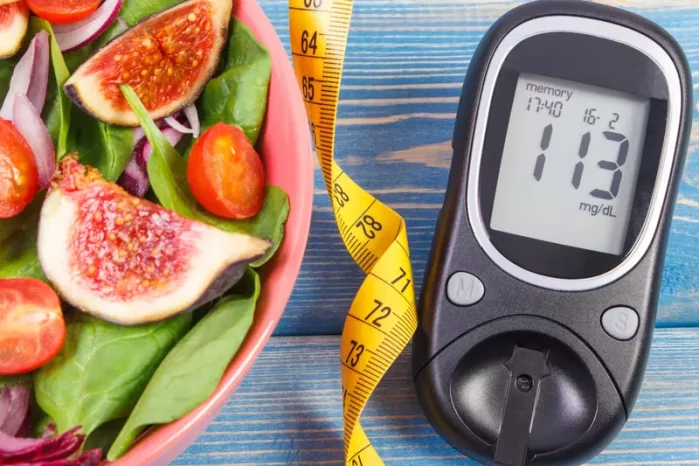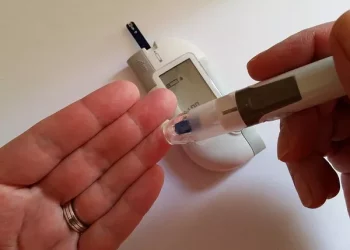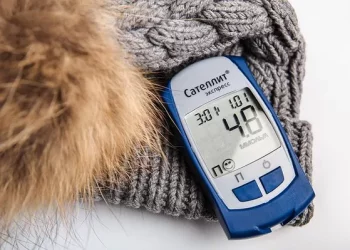Hypoglycemia, or low blood sugar, is a condition that can be concerning for individuals with diabetes. It occurs when blood sugar levels fall below the normal range, typically under 70 mg/dL (3.9 mmol/L), although the exact threshold may vary from person to person. Managing hypoglycemia is a critical aspect of diabetes care, and diet plays a key role in both preventing and treating episodes of low blood sugar. Understanding how often to eat and what types of foods to consume is an important part of effectively managing hypoglycemia.
In this article, we will explore the relationship between meal timing and blood sugar management, specifically for individuals with diabetes who are at risk for hypoglycemia. We will look at the best strategies for meal planning, how often to eat, and the types of foods to choose to maintain stable blood sugar levels and prevent hypoglycemic events. Additionally, we will discuss the role of medications, physical activity, and lifestyle factors in managing hypoglycemia.
The Importance of Consistent Meals for Blood Sugar Regulation
When managing diabetes, maintaining stable blood sugar levels is the ultimate goal. For individuals who experience hypoglycemia, maintaining consistent meal timing becomes crucial. Having too many long periods between meals can lead to a drop in blood sugar, particularly if the body’s insulin or glucose-regulating mechanisms are not functioning optimally. On the other hand, consuming meals too frequently or with high sugar content can cause fluctuations in blood glucose levels that may be equally problematic.
The body’s ability to regulate blood sugar is influenced by various factors, including insulin sensitivity, activity level, and the timing of meals. For individuals with diabetes, particularly those taking insulin or other blood sugar-lowering medications, hypoglycemia can be more common, especially if meals are skipped, delayed, or inadequate in carbohydrate content. Eating meals at regular intervals can help maintain stable blood glucose levels and prevent sudden drops in blood sugar.
How Often Should You Eat to Prevent Hypoglycemia?
The frequency of meals and snacks is an important consideration for individuals with diabetes, especially those at risk of hypoglycemia. It is generally recommended that people with diabetes eat at regular intervals throughout the day. This can help ensure a steady supply of glucose to the body, reducing the risk of blood sugar fluctuations that could result in hypoglycemia.
Here are some general guidelines regarding meal frequency for individuals with diabetes and hypoglycemia:
1. Eating Regular Meals
A standard approach is to aim for three balanced meals per day. These meals should include a combination of carbohydrates, protein, and healthy fats. By including a source of carbohydrate at each meal, the body will have a steady supply of glucose to regulate blood sugar levels.
Why This Helps: Eating regular meals ensures that the body has a consistent supply of energy throughout the day. Meals spaced too far apart can cause blood sugar to drop, especially if there is no snack to bridge the gap. By keeping meals at regular intervals, the body has a more predictable pattern of glucose availability.
Meal Timing: Aim for meals every 4 to 6 hours. This prevents large gaps in time that may lead to the onset of hypoglycemia.
2. Including Healthy Snacks Between Meals
For individuals who are prone to hypoglycemia, having snacks between meals may be necessary. Snacking can help maintain blood glucose levels between larger meals, preventing the risk of hypoglycemia. Snacks should be carefully chosen to provide a combination of carbohydrates, protein, and fats to stabilize blood sugar levels.
Why This Helps: Small, balanced snacks help ensure that blood sugar does not drop too much between meals, particularly if the person’s medication regimen or insulin dosage tends to lower blood glucose. Choosing snacks that are high in fiber and low in refined sugars can be helpful for gradual glucose release.
When to Snack: If meals are spaced more than 5 hours apart, or if blood sugar levels tend to drop quickly between meals, a mid-morning or mid-afternoon snack is a good idea.
3. Pre-Bedtime Snack
For individuals with diabetes, particularly those on insulin or other blood sugar-lowering medications, having a pre-bedtime snack is often recommended. This snack can help maintain blood glucose levels overnight and reduce the risk of experiencing hypoglycemia during sleep, a common concern for people with diabetes.
Why This Helps: Overnight hypoglycemia is a concern because the body’s insulin sensitivity can be higher at night, leading to more rapid glucose utilization. A snack before bed helps provide the body with a slow-release source of carbohydrates to prevent blood sugar levels from dipping too low overnight.
Snack Options: A small serving of a slow-digesting carbohydrate, like a piece of whole grain bread with peanut butter or a small serving of Greek yogurt with some fruit, can be helpful in maintaining stable blood sugar during the night.
What to Eat to Prevent Hypoglycemia
The quality of the food you eat plays a major role in preventing hypoglycemia. Foods that release glucose slowly into the bloodstream (low glycemic index foods) are preferable for maintaining stable blood sugar levels. Choosing meals and snacks that are rich in fiber, protein, and healthy fats can help ensure a steady, gradual release of glucose.
1. Foods High in Complex Carbohydrates
Complex carbohydrates, found in foods like whole grains, legumes, and vegetables, are digested more slowly than simple carbohydrates, providing a more sustained release of glucose into the bloodstream. Including these types of carbohydrates in meals and snacks can help keep blood sugar levels stable.
Examples of Complex Carbohydrates:
Whole grain breads and pasta
Brown rice and quinoa
Lentils, chickpeas, and beans
Sweet potatoes and other starchy vegetables
2. High-Protein Foods
Protein helps to stabilize blood sugar levels by slowing down the digestion and absorption of carbohydrates. Consuming a source of protein with every meal and snack can help prevent rapid fluctuations in blood glucose.
Examples of Protein-Rich Foods:
Lean meats, poultry, and fish
Eggs and egg whites
Tofu and tempeh
Greek yogurt, cottage cheese, and low-fat cheeses
Nuts, seeds, and legumes
3. Healthy Fats
Incorporating healthy fats into your meals can also help maintain blood sugar stability. Healthy fats help slow digestion, allowing glucose to enter the bloodstream at a more gradual pace. They also promote feelings of satiety, which can help prevent overeating and unnecessary fluctuations in blood sugar.
Examples of Healthy Fats:
Avocados
Olive oil and other plant-based oils
Nuts and seeds
Fatty fish like salmon and mackerel
4. Fiber-Rich Foods
Fiber, especially soluble fiber, helps regulate blood sugar levels by slowing the absorption of sugar. Including fiber-rich foods in every meal can help prevent blood sugar spikes and dips.
Examples of Fiber-Rich Foods:
Whole grains like oats, barley, and quinoa
Vegetables such as spinach, broccoli, and Brussels sprouts
Fruits like berries, apples, and pears
Legumes such as beans, lentils, and chickpeas
5. Limit Simple Sugars
While it’s important to have carbohydrates in your diet, individuals with hypoglycemia should limit simple sugars, such as those found in sugary snacks, beverages, and processed foods. These foods can cause rapid spikes in blood sugar, followed by sharp drops, increasing the risk of hypoglycemia.
What to Avoid:
Sugary drinks (sodas, fruit juices)
Candy, cookies, and pastries
Foods with refined sugars and white flour
Managing Hypoglycemia with Medication
For individuals with diabetes, hypoglycemia can sometimes be caused by medication, particularly insulin or sulfonylureas. It’s essential to work closely with your healthcare provider to adjust medication doses, meal timing, and snack plans to minimize the risk of hypoglycemia.
Insulin: People taking insulin should closely monitor blood glucose levels and adjust insulin doses to match food intake and physical activity levels. Having regular meals and snacks helps to stabilize blood glucose and prevent insulin from lowering it too much.
Other Medications: Medications like sulfonylureas and meglitinides stimulate the pancreas to release more insulin, and these can increase the risk of hypoglycemia. It is important to coordinate meal timing and snack frequency with these medications to avoid low blood sugar.
Physical Activity and Hypoglycemia
Exercise plays an essential role in diabetes management, but it can also increase the risk of hypoglycemia, particularly if insulin or other blood sugar-lowering medications are used. It’s important to time meals and snacks around exercise to prevent blood sugar from dropping too low.
Before Exercise: Have a balanced meal or snack that includes carbohydrates and protein about 30 minutes to an hour before physical activity.
During Exercise: For longer or intense exercise sessions, consider having a small carbohydrate-based snack to prevent hypoglycemia.
After Exercise: After exercise, blood sugar levels may continue to drop, so consuming a balanced post-workout meal or snack is recommended to stabilize blood glucose.
Conclusion:
Managing hypoglycemia requires careful attention to meal timing, food choices, and medication. For individuals with diabetes, eating at regular intervals—usually three balanced meals per day, supplemented by healthy snacks if needed—can help stabilize blood glucose levels and reduce the risk of hypoglycemic episodes. Choosing foods with complex carbohydrates, healthy fats, and protein, while limiting simple sugars, will support steady glucose levels and help prevent the fluctuations that can lead to hypoglycemia.
As with all aspects of diabetes management, it’s essential to tailor meal frequency and food choices to your individual needs. Working closely with a healthcare provider or dietitian can help ensure that you’re managing your diabetes effectively while preventing hypoglycemia and maintaining overall health. By taking a proactive approach to meal planning and blood sugar regulation, individuals with diabetes can enjoy a healthier, more balanced lifestyle.
Related topics:
What Are the Worst Foods for Prediabetes?























